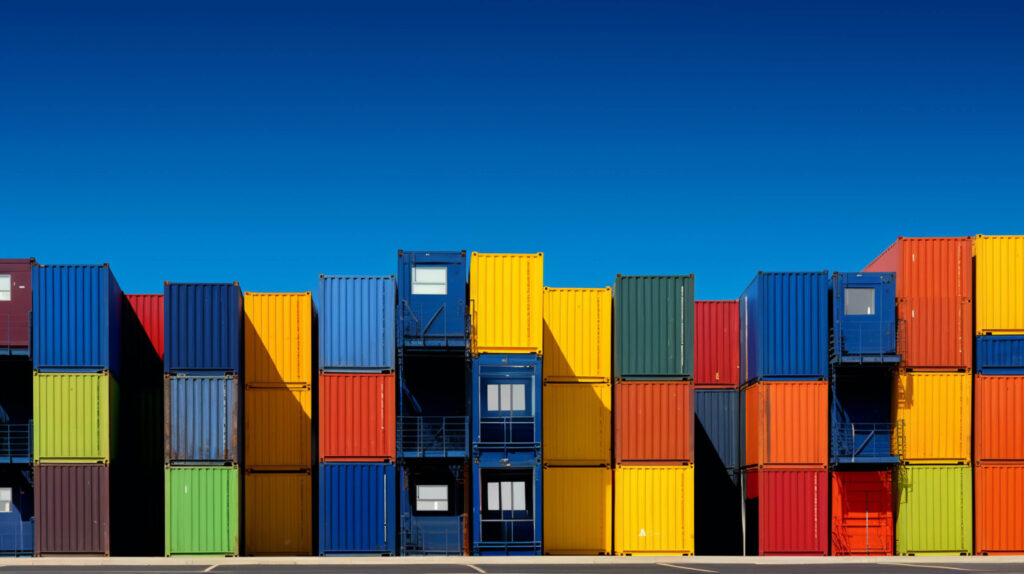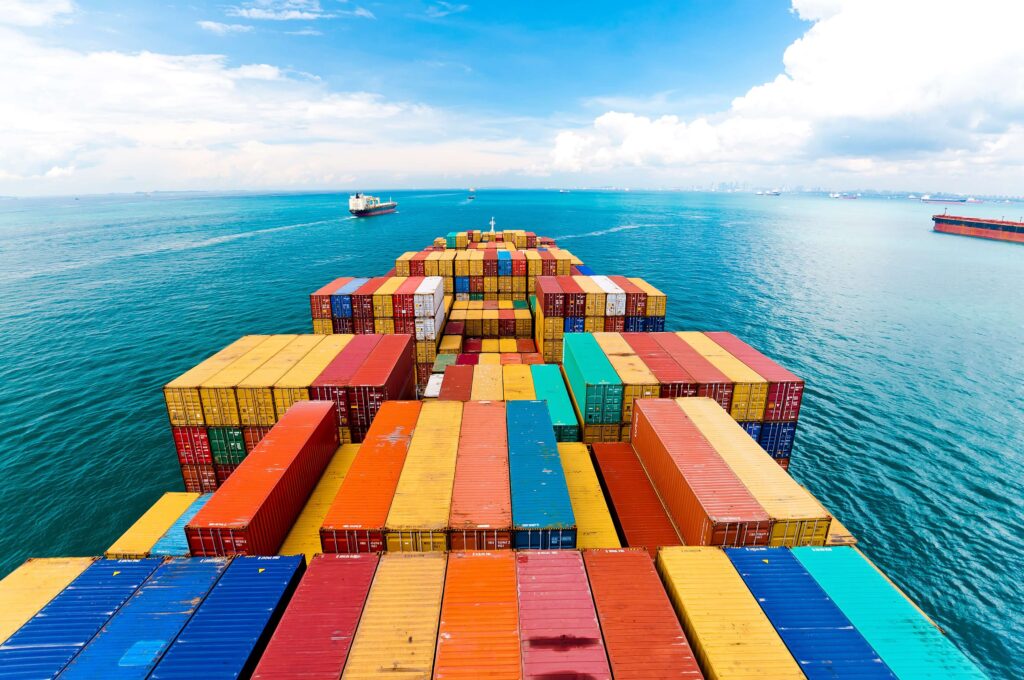Supply chain and inventory trends for 2024
While watching the news can be challenging, as we see reports of the impact of war, catastrophic weather events and other atrocities, there are things you can do to protect your supply chain and make it more resilient. This will make it easier for supply chain managers to minimize disruption and juggle price increases while keeping customers and the board happy.
According to the Association for Supply Chain Management, the number one priority for supply chain and inventory managers is supply chain digitalization, including artificial intelligence and cyber security. Big data, analytics and sustainability are also big topics for 2024, along with building supply chain resilience and agility to adapt to changing economic circumstances.
In this blog, we provide an overview of these trends.

Supply chain digitalization
Replacing manual processes with digital systems and processes provides additional supply chain visibility to mitigate or eliminate issues earlier. By reviewing your business strategy, you can align opportunities with your business objectives and prioritize your supply chain digitalization plan. These could be:
- Software – cloud-based, Software-as-a-Service (SaaS) solutions mean you can connect new software to existing business systems or Enterprise Resource Systems depending on the business need.
- Inventory optimization software – specialist inventory optimization software brings many benefits, not the least removing demand forecasting pain. Sophisticated algorithms analyze data and consider historical sales data, seasonal fluctuations, trends and promotional events to predict demand more accurately. The software will optimize your stock levels, improve overall efficiency and help set appropriate safety stock levels to reduce the risk of stockouts and maintain good service levels.
- Automation – Automation leads to greater operational efficiency to boost profitability, competitiveness and agility to meet customer demand, as well as lower inventory and transportation costs, reduce waste and enhance customer service.
- Robot automation – Robots can streamline tasks and improve operational efficiencies as they are more precise and accurate and reduce the risk of human error. For example, using automated guided vehicles (AGVs) and automated mobile robots (AMRs) to move materials and items around a warehouse.
- Robotic process automation (RPA) – bots can mimic most human-computer interactions faster and more accurately than humans at a higher volume.
- Wearable technologies – Wearable technologies like barcode scanners can increase the level of data used within the warehouse. For example, analyzing picking data to provide the shortest or fastest picking routes or sequences and other data to warehouse managers to maximize productivity.
Visibility, traceability and real-time tracking
Supply chain visibility, such as tracking items from leaving your supplier to arriving in your warehouse and being delivered to your customer, is fundamental to the smooth running of your supply chain and includes advanced technology such as artificial intelligence, Internet of Things devices and robotics. Another key tool for visibility is blockchain, which we discuss in the next section on cybersecurity.
- The Internet of Things (IoT) – IoT connects devices or objects to a digital network for global monitoring, such as NFC, QR codes, barcodes, and tags. This allows companies to respond to issues quickly, save administrative time for tracking items, reduce the risk of theft or losing items, and track and schedule when items are likely to need repairing.
- Artificial intelligence – While AI needs some human input, it can learn to carry out supply chain tasks or processes over time efficiently.
- Machine learning uses algorithms, software or systems to learn and adjust without specific programming intervention from a human. Supply chain managers can analyze trends, highlight anomalies and offer insights that wouldn’t be found using time-consuming manual processes.
- Robotics – Using robots for repetitive tasks can increase efficiency and accuracy while reducing the risk of injuries where items might be heavy or stacked high.
Cyber security
As digital supply chains operate globally, they are more vulnerable to cyberattacks. Digitally connecting with partners increases exposure to privacy breaches, identity theft, reputation damage, financial loss and worse.
As well as using firewalls and anti-hacking technologies to protect the integrity of sensitive information, you can use blockchain technology. Blockchain digital transaction ledgers create tamper-proof records of every transaction in the supply chain to provide transparency and traceability and increase trust in supply chains.
Ensuring partners safeguard their networks, devices, people, and programs enhances customer and partner trust while reducing costs and liabilities associated with cybersecurity incidents is vital.
When reviewing suppliers, communicate your security needs and any minimum requirements they must adhere to, particularly where you are connecting systems. For example, ensure any software suppliers have relevant certifications such as ISO-27001 and SOC 2.
Regularly review processes to maintain security levels and new practices and security methods.
Big data and analytics
Making data-driven decisions can revolutionize a business’s inventory and supply chain management. They can refine their offerings, develop targeted marketing campaigns, and foster greater customer loyalty.
Big data combines tools, processing systems and algorithms that can interpret insights from data. It can come from many sources and be mixed, unstructured, and continually updated.
Big data, near real-time insights, advanced analytics and automation allow companies to mitigate disruption through digital, agile supply chain management. Implementing predictive and prescriptive analytics, combined with historical data, algorithms and robotics, will provide increased visibility, synchronized planning and execution, data-driven decision-making, predictability, agility and profitability.
Disruption and risk management
Supply chain resilience

Due to their interdependency, a problem in one part could compromise the entire global network. To ensure business continuity, it’s vital that businesses can navigate the turbulent times and come out the other side thriving.
The right systems and processes will allow you to forecast and anticipate disruptions, potentially avoiding them altogether. Evaluate your supply chain resilience by looking at previous responses to previous supply chain issues. You can then plan how to strengthen your supply chain to prevent similar issues reoccurring. Supply chain resilience strategies that can reinforce risk management and provide contingency plans include buffers, supplier diversification, alternative production capabilities and transport processes.
Inventory management buffers
Supply chain buffers can effectively eliminate variability and mitigate risk to help you meet unexpected increases in customer demand.
The three primary buffers used in supply chain and inventory management are inventory, capacity and time. These involve either holding extra stock, using extra staff or paying overtime to meet temporary demand increases, paying for express orders or delaying shipping a customer’s order to avoid paying additional carriage costs.
Supplier evaluation
A systematic approach to implementing regular supplier audits and reviews based on key criteria helps understand their performance and keeps supply chains running smoothly. You can then collaborate to build and leverage strategic relationships so they will prioritize you over other customers.
Inventory optimization software can support your supplier selection process. For example, by entering supplier lead times and costs into your platform, the system can recommend the best supplier to deliver your order most efficiently.
Reshoring, nearshoring and multishoring
As supply chains operate globally, companies have preferred to use international suppliers who might be cheaper even with longer lead times. With geopolitical tensions and global events affecting demand and supply, there’s a trend to use more regional suppliers to increase supply chain resilience and reduce the impact of any disruption.
Reshoring and nearshoring have become common as disruption continues to affect global supply chains. While items might be slightly more expensive to produce, the cost can be offset by potential missed sales due to supply shortages or backlogs.
Multishoring allows you to have multiple suppliers of the same items in different locations. This allows you to hedge your risk by being able to call on a supplier in a different region if one is experiencing issues.
Green and circular supply chains
As we live through the impact of climate change, customers are becoming increasingly environmentally conscious. They are looking for their suppliers to focus on sustainability as well.
Environmental, social, and governance (ESG) regulations are also becoming more prominent globally. In 2024, the US will join other countries in requiring public companies to provide greenhouse gas emission reports.
Brands that have proactively incorporated sustainable and ethical practices into their operations are reaping benefits in enhanced brand reputation, increased customer loyalty and improved financial performance.
Green supply chains
Knowing where to start when becoming more environmentally responsible can be tricky.

We’ve already discussed digitalizing your supply chain and optimizing your inventory, which can reduce your environmental impact by reducing excess stock and minimizing waste to impact your bottom line positively. Other green options include:
- Providing better data for your suppliers to reduce the number of shipments you receive by filling minimum order quantities strategically and making the most of space in shipping containers with goods that have demand.
- Consider replacing fleets with electric or solar-powered vehicles and using software and AI to optimize routes to lower fuel or energy consumption.
- Using specialist doors available to maintain warmth in warehouses during the winter to reduce heating and energy consumption.
- Reducing energy costs and use by switching to LED lighting and implementing motion-sensor lighting across your buildings.
- Preventing heat and energy loss by updating warehouse wall insulation and windows.
- Setting up recycling stations to make it easy to reduce waste and recycle.
- Reviewing packaging for more environmentally friendly options.
Circular supply chains
Circular economies prioritize responsible, restorative, and regenerative aspects of the global ecosystem, which are imperative to reducing the impact on the planet and maintaining production schedules.
The circular economy can help with sustainable business processes and saving money. As raw materials prices fluctuate, companies can break down finished products and return them to their natural form to reuse or resell.
Implementing a circular supply chain involves working with your suppliers and customers to develop new working practices that aren’t detrimental to the item’s quality and performance.
Summary
Supply chain leaders face multifaceted and demanding challenges but also opportunities for innovation and growth.
Inventory and supply chain management teams that embrace change and leverage technology like inventory optimization software will reap the benefits. EazyStock’s powerful inventory optimization solution can automate processes, save money and increase operational efficiencies.
Contact our team for more information on how EazyStock can help you overcome supply-chain issues to thrive in 2024.








